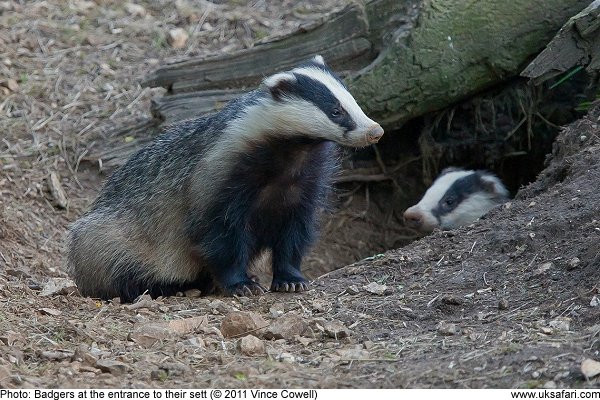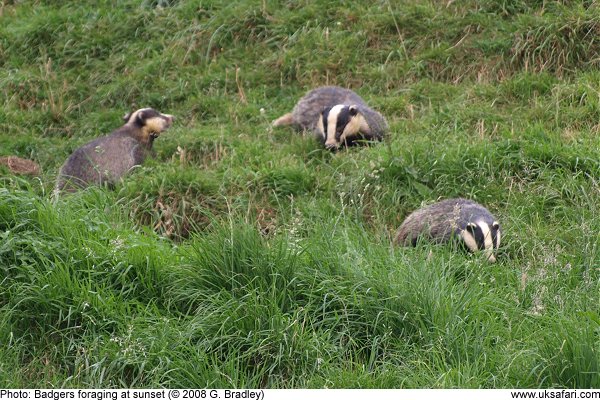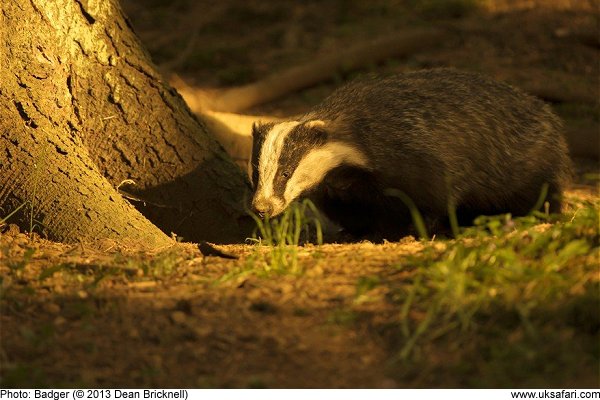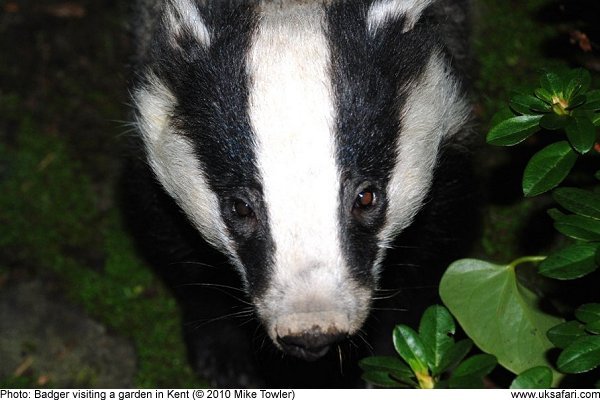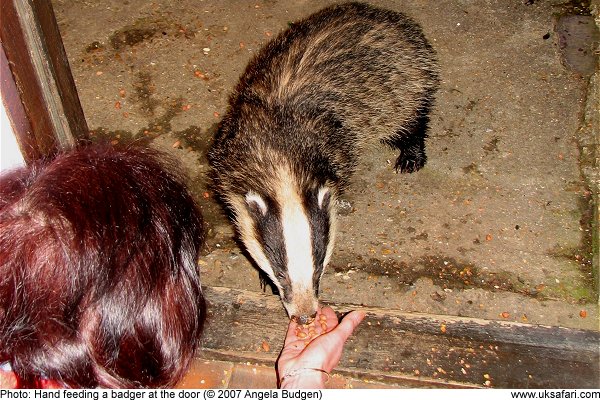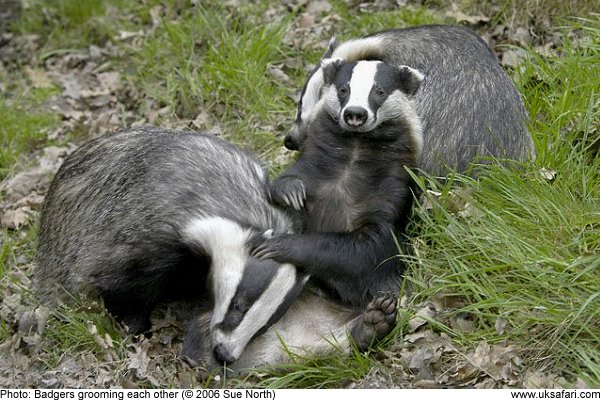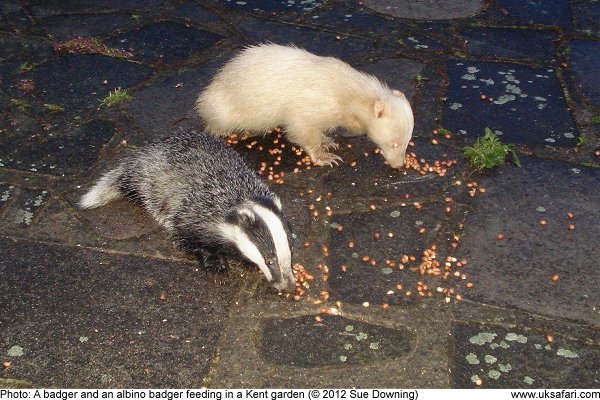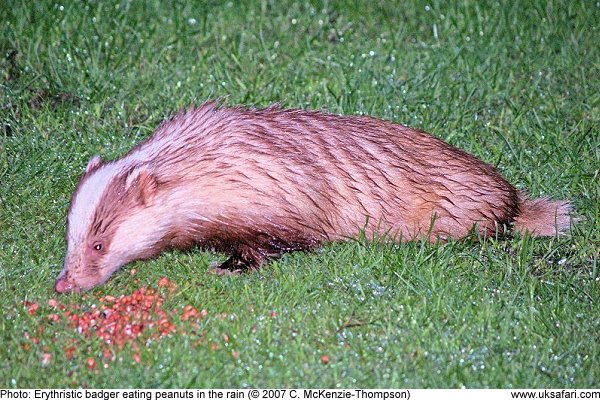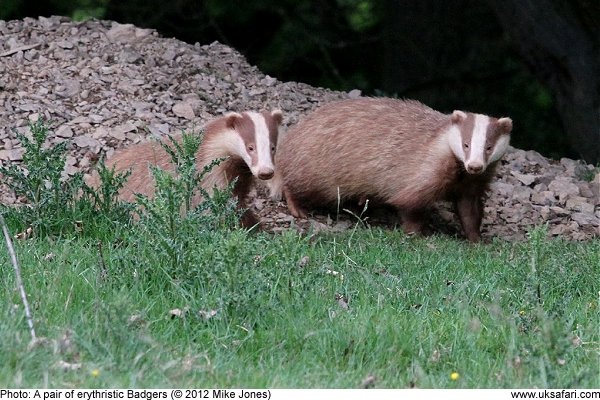 Quick Facts
Quick Facts
Scientific name: Meles meles
Size: Badgers grow to around 80cm in length, and have a short tail of around 15cm. They are our heaviest carnivore, weighing up to 18kg
Distribution: Distributed throughout the U.K. but more frequently seen in the south and west
Months seen: All year round
Habitat: Badgers have spread to urban areas, but most still prefer to live in undisturbed woodland
Food: A badgers diet consists of just about anything. They are true omnivores, but are particularly partial to earthworms, mice, frogs and bluebell bulbs. They will even come into urban gardens at night to search for nuts and bread left around bird tables
Special features: Badgers are one of our most shy and harmless mammals. They spend the daytime underground in their dens, known as 'setts', coming out after dark to feed and play.
They can be easily recognised by their two black facial stripes running from the nose, across the eyes and ears, to the back of the neck. There are some variations, such as albino badgers (see photo) which are all white, and erythristic badger which have a pinkish-red tint to their fur and skin, but these are fairly rare.
Badgers have stocky bodies and powerful front paws which they use for digging their underground homes. The name 'badger' comes from the French word 'becheur', which means digger.
They often live in large family groups of 10 or more, and the setts are used by successive generations of badgers. If undisturbed a sett can remain in the same location for centuries.
Badgers are relatively clean animals, spending much of their time grooming themselves, and each other. They change their bedding at regular intervals for fresh grass and leaves. They also dig special dung pits or latrines well away from the entrances to the sett.
An old English name for the badger is 'brock' and some villages, like 'Brockenhurst' and 'Brockhampton' reflect this word in their name, indicating their ancient associations with badgers.
Badgers belong the family of 'Mustelids', which means they're related to otters, pine martens, polecats, stoats and weasels.
It's been estimated that a badgers sense of smell is around 800 times better than ours. If you want to watch badgers you need to be downwind of them so they're not able to detect your scent.
 Related Pages
Related Pages
- How to Find a Badger
- More Badger Photos (feeding in gardens)
- Even More Badger Photos and a Video clip of a Badger Feeding
- Badger Cub Rescue Story
- Back Garden Badgers
- Badger Groups and Organisations
- UK Safari Mammals section
- Free Newsletter

 Popular Pages
Popular Pages
Amphibians, Bats, Badgers, Beetles, Birds, Birds of Prey, Bumble Bees, Butterflies, Caterpillars, Creepy-Crawlies, Deadly Spiders, Dolphins, Dragonflies, E-Postcards, False Widow Spiders, Free Newsletter, Frogs, Fungi, Garden Spiders, Glow-Worms, Grey Squirrels, Hedgehogs, House Spiders, Ladybirds, Mammals, Marine Mammals, Moths, Owls, Reptiles, Spiders, Toads, Trees, Wildlife Hospitals
Copyright © 2020 G. Bradley UK Safari. All rights reserved | About Us | Links | Contributors


 Badgers
Badgers